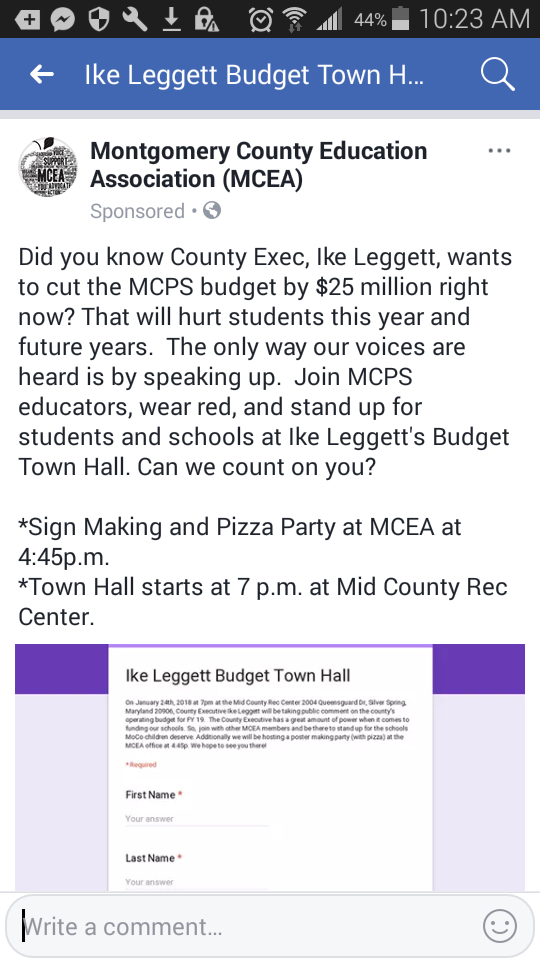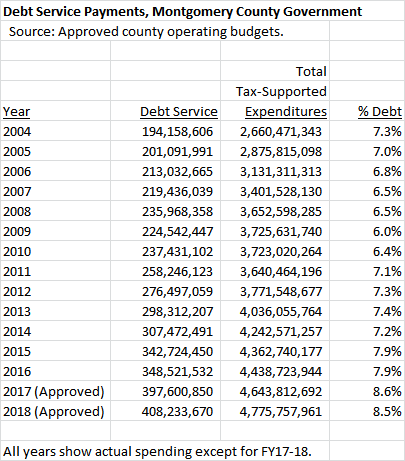By Adam Pagnucco.
MCPS’s contested boundary analysis has dominated MoCo’s nasty school board race. It’s an issue definitely worthy of discussion, but it’s not the only one. Here are a few other issues that the school board candidates should address.
How can the Weast coalition be rebuilt?
Former MCPS Superintendent Jerry Weast, who ruled the schools from 1999 through 2011, was many things: a bureaucratic empire builder, a ruthless field general, a hardened wielder of data and much more. He was also one of the greatest coalition builders in the history of MoCo. Weast knew that his initiatives cost money and he knew he needed allies to get it. His talents for horse-trading, cooptation, message-building and political head-knocking served him well. He reached an understanding with MCPS’s stakeholders that they could participate in crafting his budgets, but in return, they had to stick together against the common enemy: elected officials with funding authority. When budget time came, those who thought about going against Weast’s budget not only had to deal with Weast himself and his ministry of propaganda; they also had to fight the county employee unions, the PTAs and even the Washington Post’s editorial page (which was firmly pro-Weast). Weast’s power was so feared that most of the time, he didn’t even have to fight – he simply cut deals with chastened politicians who moved on to easier prey.
The Great Recession killed the Weast coalition and it has not been rebuilt. The relationship between current MCPS management and the unions is particularly problematic. In the Weast era, the unions completed contract negotiations in the fall, but as of this writing, none of them have yet finalized new collective bargaining agreements with MCPS.

These guys want to know who will get the band back together.
The recent history of the county’s local per pupil funding demonstrates the consequences of the declining power of school advocates. The chart below shows local per pupil contributions to MCPS – in other words, the amount of local dollars the county appropriated per student, which excludes other sources of money (like state and federal aid). The green line shows nominal dollars while the red line shows real 2020 dollars (which have been adjusted for inflation).

In nominal dollars, the county’s local per pupil contribution peaked at $11,249 in FY09. It was then cut for three straight years and frozen for four straight years until it began increasing in FY17. The county’s per pupil contribution in FY20 ($10,923) is 2.9% below its FY09 peak.
When adjusting for inflation, the story becomes much worse. In 2020 dollars, the FY09 peak was $13,508. By FY20, the local per pupil contribution had fallen to 19.1% below the peak. During this period, the percentage of students receiving ESOL services and free and reduced price meals rose continuously, meaning that needs were increasing as local money per student was not keeping pace with inflation. This is the number one financial challenge faced by MCPS, at least prior to the era of COVID-19.
The school system needs money, and in a political context, extracting money requires power. School board candidates should lay out how they intend to rebuild and unify MCPS’s advocate community. The alternative is to go hat-in-hand to county funders just as one of the worst budget crises in county history erupts – a crisis from which MCPS will not be immune.
What happens when the next school year starts?
MCPS will likely continue online learning for the rest of this school year. But no one knows what will happen when the next school year begins. The options are many and all of them have drawbacks. How would school board candidates balance learning, resources and the health of students, school employees and families?
How can MCPS get more bang for its buck in the capital budget?
MCPS enrollment has been growing rapidly for a decade, but at the moment, the county’s capital budget is shrinking. MCPS’s capital budget has done better than some other programs (especially transportation), but in real dollar terms, it peaked in FY17. The system could be in for cuts early next year because two large sources of school construction funding – recordation tax premiums and impact taxes – are likely to be hit hard by the COVID-19 recession. The General Assembly passed a large expansion of state school construction funding in March but, because it was tied to the Kirwan funding bill vetoed by Governor Larry Hogan, that money is on hold for now.
With enrollment continuing to grow and capital money tight (at best), MCPS will have to get more bang for its buck with whatever capital dollars it can acquire. School board candidates should be prepared to discuss how MCPS can best do that.
What is going on in the central office?
In FY17, MCPS spent $42,850,477 on administration spending. (This category, defined as Category 1 by the state, includes the central office but not school-based administration like principals.) The FY20 approved budget contains $56,084,530 in administration spending, a 31% increase. Over the same period, MCPS’s grand total spending went up from $2,426,611,128 to $2,680,574,773, an increase of 10%. Why has administration spending grown three times as fast as overall school spending? School board candidates should be asking that question and vowing to get answers.
Editor’s Note: MCPS has replied that nearly $9 million of the increase is due to replacing business systems. You can see their response here.
A student speaks about an issue.
Finally, the following was written by my kid, who is a 5th grade MCPS student. Candidates, pay heed as this guy is a future voter!
School lunches have been a problem for a really long time in MCPS, at least in my school. Most of the food that my school provides during our lunch time is pretty low quality. A lot of the food that my school serves is usually very sugary and unhealthy which shouldn’t be the case because there are students who eat that food 5 days a week which I assume is not good for our stomachs. Besides the lunches that students can bring from home, keep in mind that school lunches are the only type of food that is supposed to replenish our energy to keep us active throughout the day. In my opinion all types of students deserve a good lunch, because all of us are working very hard throughout the day. But if some students have to eat unhealthy food as the only source of energy to get them through the day, that is a problem. Point being, please do whatever is necessary to provide healthier lunches for the kids who need them.
PS: Even though I always bring lunch from home, the pizza that my school serves for lunch is straight up kind of disgusting.
If anything is worse than a nasty election, it’s nasty food. No matter how one feels about the boundary analysis, hopefully we can agree on that!













